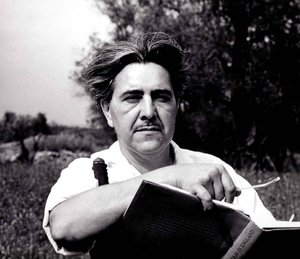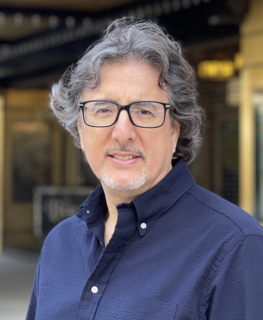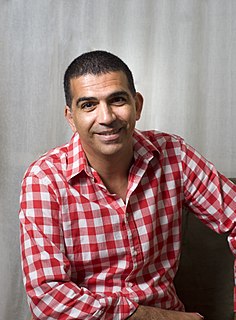
Origami is the art of paper folding, which is often associated with Japanese culture. In modern usage, the word "origami" is used as an inclusive term for all folding practices, regardless of their culture of origin. The goal is to transform a flat square sheet of paper into a finished sculpture through folding and sculpting techniques. Modern origami practitioners generally discourage the use of cuts, glue, or markings on the paper. Origami folders often use the Japanese word kirigami to refer to designs which use cuts.

Robert Harbin was a British magician and author. He is noted as the inventor of a number of classic illusions, including the Zig Zag Girl. He also became an authority on origami.

John Montroll is an American origami artist, author, teacher, and mathematician. He has written many books on origami. Montroll has taught mathematics at St. Anselm's Abbey School in Washington, D.C. since 1990.

Gershon Legman was an American cultural critic and folklorist, best known for his books The Rationale of the Dirty Joke (1968) and The Horn Book: Studies in Erotic Folklore and Bibliography (1964).
Nick Robinson is a British paperfolder. He was awarded the Sydney French Medal in 2004 by the British Origami Society and is an Honorary Member and President of the British Origami Society.

Origamic Architecture is a form of kirigami that involves the three-dimensional reproduction of architecture and monuments, on various scales, using cut-out and folded paper, usually thin paperboard. Visually, these creations are comparable to intricate 'pop-ups', indeed, some works are deliberately engineered to possess 'pop-up'-like properties. However, origamic architecture tends to be cut out of a single sheet of paper, whereas most pop-ups involve two or more. To create the three-dimensional image out of the two-dimensional surface requires skill akin to that of an architect.

The history of origami followed after the invention of paper and was a result of paper's use in society. Independent paper folding traditions exist in East Asia, and it is unclear whether they evolved separately or had a common source.
Lillian Rose Vorhaus Kruskal Oppenheimer was an American origami pioneer. She popularized origami in the West starting in the 1950s, and is credited with popularizing the Japanese term origami in English-speaking circles, which gradually supplanted the literal translation paper folding that had been used earlier. In the 1960s she co-wrote several popular books on origami with Shari Lewis.
Ion Birch is a contemporary American artist who graduated from the Rhode Island School of Design in 1994.
Jeremy Shafer is a professional entertainer and origamist based in Berkeley, California. He has been folding origami since he was ten. He creates his own origami designs which tend to be whimsical and unique, such as his "Man Swatter" and "BARF Bag". Shafer is sometimes billed as Jeremy the Juggler, and his stunts include folding a burning origami bird, riding a flaming unicycle, and juggling torches.
OrigamiUSA is the largest origami organization in the United States, with offices located at the American Museum of Natural History in New York City. It was founded in 1980 by Michael Shall, Alice Gray, and Lillian Oppenheimer as the Friends of the Origami Center of America and was renamed OrigamiUSA on July 1, 1994. Since its founding, OrigamiUSA has been fully non-profit and volunteer-based and is a 501(c)(3) corporation. OrigamiUSA organizes the largest origami convention in the world each June in New York City, and in addition publishes a magazine, The Paper, an annual collection of origami diagrams, and a website, and also provides educational materials and supports numerous other activities that spread the art of origami.

Marc Myers is an American journalist, author, and historian and a regular contributor to The Wall Street Journal, where he writes on music, the arts, and celebrities. In 2007, he founded JazzWax, a leading daily jazz blog that won the 2012, 2015 and 2018 Jazz Journalists Association's "Blog of the Year" award.

Éric Joisel was a French origami artist who specialized in the wet-folding method, creating figurative art sculptures using sheets of paper and water, without the use of any adhesive or scissors.
Ligia Montoya was an Argentinian paper-folding artist, who played an important role in all aspects of the 'golden age' of the international origami movement from the 1950s, from which developed modern artistic origami—that is, innovative paper-folding exploring a variety of different approaches, rather than repeating limited traditional figures.
Samuel L Randlett is an American origami artist who helped develop the modern system for diagramming origami folds. Together with Robert Harbin he developed the notation introduced by Akira Yoshizawa to form what is now called the Yoshizawa-Randlett system. This was first described in Samuel Randlett's Art of Origami in 1961.

The orizuru, or paper crane, is a design that is considered to be the most classic of all Japanese origami. In Japanese culture, it is believed that its wings carry souls up to paradise, and it is a representation of the Japanese red-crowned crane, referred to as the "Honourable Lord Crane" in Japanese culture. It is often used as a ceremonial wrapper or restaurant table decoration. A thousand orizuru strung together is called senbazuru (千羽鶴), meaning "thousand cranes", and it is said that if someone folds a thousand cranes, they are granted one wish.

Alice E. Gray was an American entomologist and origamist. She worked as an entomologist at the American Museum of Natural History (AMNH) in New York for 43 years, writing, illustrating, and creating large models of insects. Known as the "Bug Lady", she conducted outreach and education in the museum, in local schools, and appeared on The Tonight Show. She began practicing origami first as an extension of her interest in insects, starting a tradition of using origami creatures to decorate the museum's Christmas tree. In the 1960s, she became more involved with the origami community and, in 1978, co-founded the Friends of the Origami Center of America in New York with Lillian Oppenheimer and Michael Shall, now known as OrigamiUSA.

Ilan Garibi is an Israeli origami artist and designer. He started his way in the world of art and design as a paper origami artist, and today also designs furniture, jewelry and works of art out of a variety of materials, such as metals, wood, and glass. He masters an origami genre called Tessellation. During 2012 he co-established Origamisrael, the Israeli origami artists' organization, and he is its chairman ever since. He is an author of several books in the fields of origami and puzzles. In September 2019, Garibi presented a TEDx talk as part of TEDxPaloAltoSalon.
Howard Kirschenbaum is an American educator, author, researcher, and historic preservationist. He is a Professor Emeritus and former Chair of the Department of Counseling and Human Development at University of Rochester’s Margaret Warner Graduate School of Education and Human Development.










